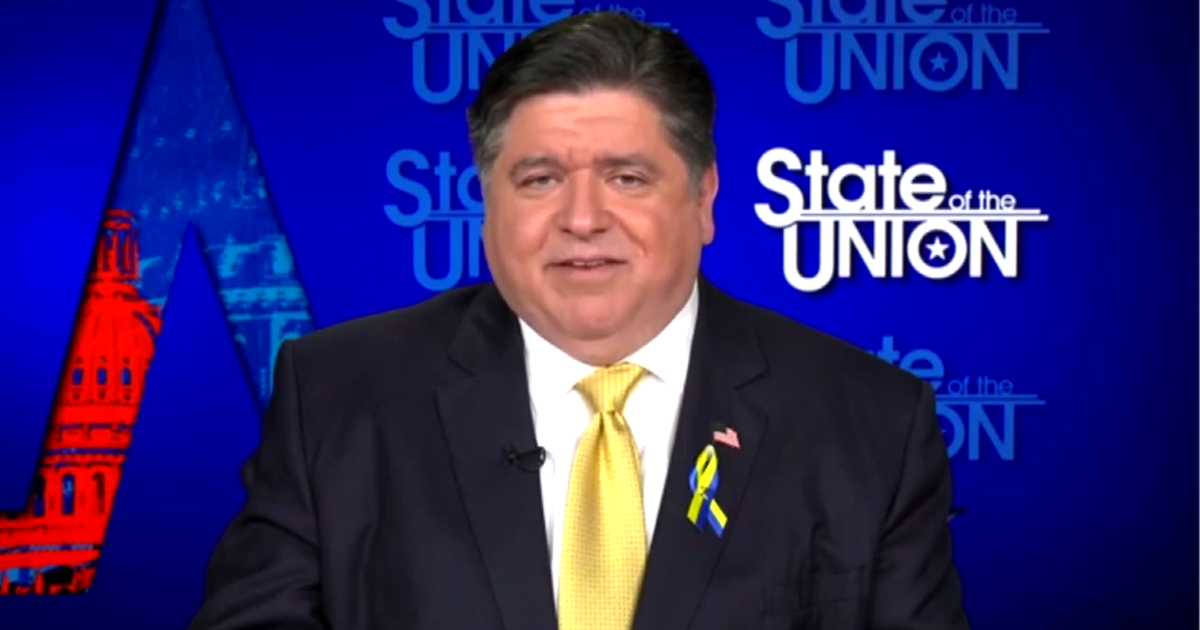CDC Updates School Reopening Guidance To Recommend 3 Feet Of Distancing In Most Classrooms If Students Are Masked
CHICAGO (CBS/AP) -- In light of studies showing it's safe for students to sit 3 feet apart at school in most cases if they're wearing masks, the U.S. Centers for Disease Control and Prevention has updated its guidance for reopening schools.
The update could pave the way for more classes to return to in-person learning, as the Biden administration urges schools to reopen. For weeks, federal officials have acknowledged that some school districts would be unable to meet the guidelines laid out by the CDC in February despite an infusion of funds from the recently-passed American Rescue Plan.
In previous school guidelines issued in February, the CDC suggested seating students 6 feet apart, and said physical distancing "should be maximized to the greatest extent possible."
However, on Friday the CDC updated its school guidance, citing three studies which "build on evidence that physical distancing of at least 3 feet between students can safely be adopted in classroom settings where mask use is universal and other prevention measures are taken."
The CDC's new guidance recommends:
- In elementary schools, all students should remain at least 3 feet apart in classrooms where mask use is universal, regardless of the level of COVID-19 transmission in the community.
- In middle and high schools, students should remain at least 3 feet apart in classrooms where mask use is universal, and COVID-19 transmission in the community is low, moderate, or substantial.
- In middle schools and high schools, students should be at least 6 feet apart in communities where COVID-19 transmission is high, if "cohorting" is not possible. Cohorting is when groups of students are kept together with the same classmates and staff throughout the day to reduce the risk of spreading the virus.
"CDC is committed to leading with science and updating our guidance as new evidence emerges," said CDC Director Rochelle P. Walensky. "Safe in-person instruction gives our kids access to critical social and mental health services that prepare them for the future, in addition to the education they need to succeed. These updated recommendations provide the evidence-based roadmap to help schools reopen safely, and remain open, for in-person instruction."
Around 40% of counties in the U.S. remain at "high" transmission, according to CDC figures. The updated guidance describes community transmission as an "alert system" for the risk of COVID-19 spread in schools. If levels rise, administrators are encouraged to impose "restrictions on sports and extracurricular activities to protect in-person learning."
CDC officials said they still recommend at least 6 feet of distance between adults in school buildings, and between adults and students. Adults tend to become sicker and spread the virus faster than children.
Six feet of distancing also is recommended for everyone in school common areas, such as lobbies and auditoriums; when masks can't be worn, such as when eating; in community settings outside of the classroom; during activities with increased exhalation, such as singing, shouting, band practice, sports, or exercise. For those kinds of activities, the CDC recommends moving them outdoors or to large, well-ventilated spaces whenever possible.
In one study of elementary schools in Utah that were unable to space desks more than 3 feet apart "because of limited space," researchers found little transmission "despite high community incidence."
The agency's updated guidance also incorporates new recommendations to implement screening testing, both "for schools that use less than six feet of physical distancing" and to support extracurricular activities, like sports.
Several school systems have implemented such testing campaigns, checking students and staff for COVID-19 daily with rapid turnaround tests. On Wednesday, the Biden administration announced it would pour billions of dollars into ramping up screening testing for more classrooms.
"We know there are schools that have tried to do it and have struggled to have the resources to do it. And so we want the resources out there, and we want to attract school reopenings," Carole Johnson, the Biden administration's COVID-19 testing czar, told reporters on Wednesday.
The announcement from the CDC comes as the Chicago Public Schools have resumed in-person learning for students in preschool through 8th grade, although parents still have the option of keeping their students learning remotely. CPS has set April 19 as their target date for resuming in-person learning for high school students, although the district is still negotiating the high school reopening plan with the Chicago Teachers Union.
The revised recommendations represent a turn away from the 6-foot standard that has sharply limited how many students some schools can accommodate. Some places have had to remove desks, stagger scheduling and take other steps to keep children apart.
Three feet "gives school districts greater flexibility to have more students in for a prolonged period of time," said Kevin Quinn, director of maintenance and facilities at Mundelein High School in suburban Chicago.
In recent months, schools in some states have been disregarding the CDC guidelines, using 3 feet as their standard. Studies of what happened in some of them helped sway the agency, said Greta Massetti, who leads the CDC's community interventions task force.
While there is evidence of improved mental health and other benefits from in-person schooling, "we don't really have the evidence that 6 feet is required in order to maintain low spread," she said.
Also, younger children are less likely to get seriously ill from the coronavirus and don't seem to spread it as much as adults do, and "that allows us that confidence that that 3 feet of physical distance is safe," Massetti said.
Last year, the CDC advised that one way for schools to operate safely was by keeping children 6 feet apart, the same standard applied to workplaces and other settings.
In contrast, the World Health Organization suggested 1 meter — a little over 3 feet — was sufficient in schools. The American Academy of Pediatrics says desks should be 3 feet apart and "ideally" 6 feet.
The CDC guidance was problematic for many schools that traditionally had 25, 30 or more children per classroom in closely grouped desks. Some schools adopted complicated scheduling that might, for example, have half a class come to school on some days and the other half on other days.
The Ridley School District in suburban Philadelphia took steps like that to follow the 6-foot guideline after the CDC emphasized it last summer. But neighboring communities went with 3 feet, "and we're not seeing the data really reflect a different spread rate," said Lee Ann Wentzel, the district's superintendent.
The district had already decided to shift to 3-foot distancing starting next month and invite all students to attend five days a week. But Wentzel said she was glad to hear of the change in CDC guidance because that will make it easier to explain and defend the district's decision.
A recent study in Massachusetts looked at infections of students and staff members in schools that used the 3-foot standard and those that used the 6-foot one. It found no significant difference in infection rates.
Massetti said other research has also been influential, including two studies the CDC released Friday.
One was a study in Utah that found low coronavirus transmission rates among students who did a good job wearing masks and whose desks were only 3 feet apart. The other study, done in Missouri, pointed to a similar conclusion, Massetti said.
The guidance change comes at a time when new, more contagious variants of the coronavirus are increasingly spreading. That means a continued emphasis on mask wearing and other such measures, Massetti said.
(© Copyright 2021 CBS Broadcasting Inc. All Rights Reserved. The Associated Press contributed to this report.)



